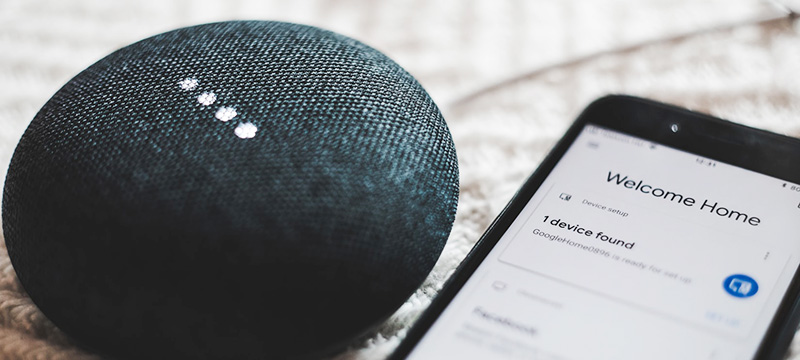The rise of the Internet of Things (IoT) has ushered in a new era of possibilities to transform traditional homes into smart, automated spaces. This comprehensive project plan delves into the essential components of building a smart home with IoT, covering goal definition, device selection, network architecture, security considerations, integration strategy, testing, optimization, and ongoing maintenance. Let’s take a look!
What is IoT?
The Internet of Things (IoT) is an innovative paradigm that envisions a network of interconnected devices, physical objects, and systems, all of which can communicate and exchange data over the Internet. Essentially, IoT transforms everyday objects into intelligent data-generating devices that can be monitored, controlled, and optimized for a variety of purposes.
The core of IoT is based on integrating sensors, actuators, and communication technologies into devices to enable data collection and transmission. These devices range from common household items such as thermostats and refrigerators to industrial machinery and portable devices. Data generated by these devices can be analyzed to derive insights, automate processes, and improve decision-making.
The key components of IoT include:
Sensors: Devices with sensors can collect information from the environment, such as temperature, humidity, movement, and light.
Connectivity: IoT devices transmit data to a central system or other connected devices using various communication protocols such as Wi-Fi, Bluetooth, Zigbee, and cellular networks.
Data Processing: The collected data is processed through cloud-based platforms or edge computing where it is analyzed, stored, and transformed into actionable information.
Actuators: Based on insights gained from data analysis, IoT devices can activate actuators to perform specific actions, such as: adjust settings, trigger alarms, and control other connected devices.
I. Defining Smart Home Goals
Before starting a smart home project, it is important to define clear goals to guide the implementation process. Consider specific areas you want to improve, such as home automation, security, energy management, or entertainment.
Prioritize these goals to ensure your projects stay focused and deliver tangible benefits. For example, if energy efficiency is a priority, you might set a goal such as reducing your energy consumption by a certain percentage or optimizing your heating and cooling system. If security is a concern, define goals such as implementing robust surveillance systems, smart locks, and intrusion detection mechanisms. Also, ensure your contractor uses field service management software to manage your project.
II. Device Selection
Selecting the right devices is the cornerstone of a successful smart home. Consider the following categories of IoT devices and their potential applications.
Smart Lighting:
Choose energy-efficient smart light bulbs that can be controlled remotely via a dedicated app. Introduce motion sensors and automating lighting according to occupancy, contributing to both energy savings and comfort.Smart Thermostat:
Choose a thermostat that learns your preferences over time and adjusts temperatures for maximum comfort and energy efficiency. Integrate your thermostat and weather forecast to proactively adjust heating and cooling settings based on external conditions.Home Security Camera:
For added security, choose a high-resolution camera with motion detection. Ensure compatibility with central security systems for an integrated approach to monitoring and responding to potential threats.Smart Door Lock:
Choose a smart lock that can be controlled remotely via a mobile app. Implement features such as virtual keys and access logging to improve security and user accountability.Smart Sensors:
Install sensors that monitor environmental factors such as temperature, humidity, and air quality for a comprehensive understanding of your home’s health. Integrate security sensors to detect anomalous activity like an unexpected door opening.III. Network Architecture
Network architecture forms the backbone of a smart home and enables seamless communication between devices. Consider the following:
Network protocols:
Choose wireless protocols such as Zigbee or Z-Wave for low-power, short-range communication between devices. Ensure compatibility with Wi-Fi for high-bandwidth applications such as video streaming.Hub or Controller:
Select the central hub or controller that matches the selected device and protocol. Evaluate whether the hub supports the integration of various devices and has the computing power to handle the communication load.Bandwidth considerations:
Evaluate the bandwidth requirements of each device to ensure a stable and responsive network. Select devices with low latency requirements like security cameras and smart door locks to maintain real-time responsiveness.IV. Security Considerations
With the interconnectedness of IoT devices, ensuring the security of your smart home becomes paramount. Implement the following security measures:
Device Authentication:
Enable a robust authentication mechanism for each IoT device that requires unique credentials. Update your passwords regularly and consider implementing multi-factor authentication as an additional layer of security.Encryption:
Implement end-to-end encryption to secure communications between devices and the central hub. Always ensure that data sent over the network is encrypted to prevent unauthorized access or interception.Regular Software Updates:
Keep all central hub devices and firmware up to date to address security vulnerabilities. If possible, enable automatic updates to help your smart home remain resilient to new threats.Network Segmentation:
Segment your network to separate IoT devices from critical systems such as PCs and work-related devices. Create separate virtual local area networks (VLANs) to increase security and control access.V. Integration Strategy
Achieving a seamless, integrated smart home experience requires careful planning and execution. Consider the following strategies:
Platform Compatibility:
Ensure that the selected device is compatible with popular smart home platforms such as Amazon Alexa, Google Assistant, and Apple HomeKit. For better interoperability and future-proofing, choose devices that adhere to open standards.Automation Rules:
Define automation rules based on user settings and routines. Leverage the power of the Intelligent Assistant to create voice-activated commands for your users.Mobile Application:
Choose a device with an easy-to-use mobile application for easy control and monitoring. The mobile app provides real-time updates and alerts to keep you informed of the status of your smart home.VI. Testing and Optimization
Once your smart home is set up, thorough testing is essential to identify and resolve issues. Run the following test:
Functional testing:
Verify that each device functions as intended and responds accurately to commands and triggers. Testing automation rules ensure a seamless and reliable experience.Security Audits:
Conduct periodic security audits to identify and remediate vulnerabilities. Test the responsiveness of security features such as intrusion detection and video surveillance.User Experience Testing:
Gather user feedback to evaluate the overall experience of interacting with your smart home. Make adjustments based on user settings to address vulnerabilities identified during testing.VII. Maintenance and Upgrades
Smart Homes require regular maintenance to ensure optimal performance.Create a maintenance plan that includes:
Periodic Equipment Checks:
Schedule periodic checks to ensure that all equipment is functioning properly. Replace or upgrade end-of-life equipment to maintain peak performance.Firmware Updates:
Keep both devices and the central hub up to date with firmware updates. Quickly implement updates to address security vulnerabilities, introduce new features, and improve overall performance.Scalability:
Plan for future expansion by choosing devices and infrastructure that can easily scale. Consider integrating new technologies to keep your smart home at the forefront of innovation.VIII. IoT and Sustainability
The convergence of IoT and sustainability represents a powerful partnership that has the potential to address environmental challenges and contribute to a more resource-efficient and greener future. IoT technology plays an important role in promoting sustainability through several key mechanisms.
Energy Efficiency: IoT-enabled devices with sensors and intelligent algorithms enable precise monitoring and control of energy consumption. In the context of a smart home, this means intelligent lighting systems that adjust brightness based on occupancy, thermostats that optimize heating and cooling, and appliances that operate at peak efficiency. By minimizing energy waste, IoT reduces overall energy consumption and reduces carbon emissions.
Smart Resource Management: IoT sensors can monitor and manage valuable resources such as water and gas. In smart homes, water and gas sensors can instantly detect leaks, preventing unnecessary waste and potential environmental damage.
Waste Reduction: IoT devices help reduce waste by optimizing waste collection processes. Smart containers equipped with sensors can monitor the filling level and send a signal when it needs to be emptied. This not only increases the efficiency of waste management systems but also reduces unnecessary transport and associated emissions.
Environmental Monitoring: IoT plays an important role in monitoring and controlling environmental pollution. Air quality sensors can detect pollutants in real-time, allowing authorities and communities to take timely actions to address air quality issues. This information allows individuals to make informed decisions about their daily activities, contributing to a healthier living environment.
Renewable Energy Integration: IoT technologies improve the integration of renewable energy sources into the power grid. A smart grid can integrate energy generated from solar panels, wind turbines, and other renewable energy sources and dynamically balance energy supply and demand. This not only promotes the use of clean energy but also contributes to the stability and resilience of the entire energy infrastructure.
There You Have It
Building a smart home using IoT is a dynamic and challenging process that requires careful planning, device selection, network configuration, and ongoing maintenance. Improve comfort, security, and energy efficiency by defining clear goals, choosing the right devices, establishing a robust network architecture, prioritizing security, and implementing an effective integration strategy. You can build a smart home that not only makes your home more accessible but also more adaptable to new technologies. Regular testing, optimization, and maintenance are key to ensuring your smart home continues to meet your changing needs in the ever-changing landscape of IoT technologies.
The post A Comprehensive Project Plan For Building A Smart Home Using IoT appeared first on IoT Business News.

























